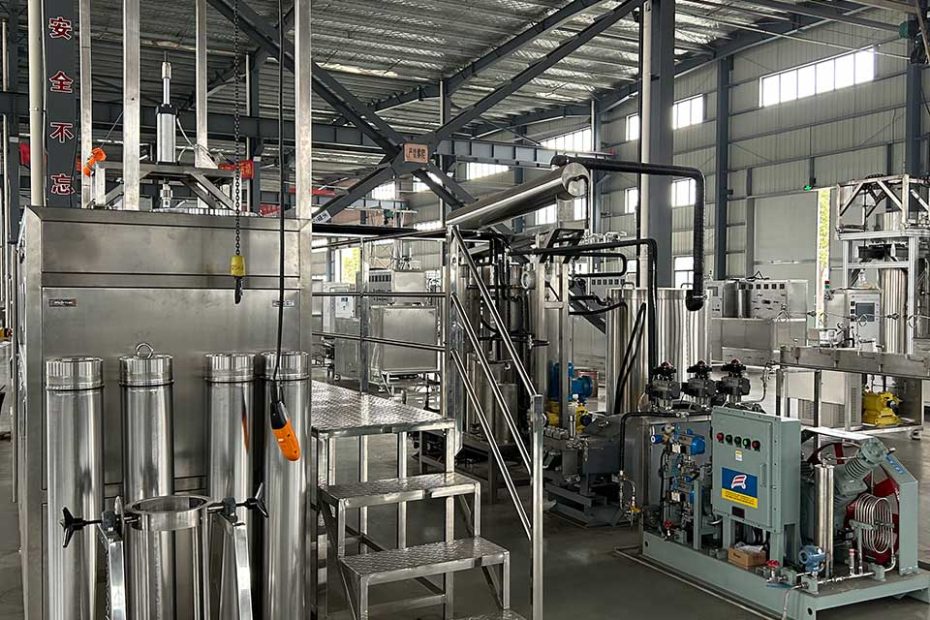Carbon dioxide (CO2) extraction has gained significant attention as a method for extracting various substances due to its efficiency and environmental friendliness. However, one crucial aspect that needs consideration is the cost associated with CO2 extraction compared to other extraction methods.
CO2 Extraction: A Brief Overview
Before delving into the cost analysis, let’s first understand the basics of CO2 extraction. CO2 extraction, also known as supercritical fluid extraction, utilizes carbon dioxide in its supercritical state to extract desired compounds from various substances. The supercritical state of CO2 is achieved by manipulating temperature and pressure, allowing it to act as a solvent for extracting valuable substances like essential oils, cannabinoids, and more.
The Cost Factors of CO2 Extraction
When evaluating the cost of CO2 extraction, several factors come into play. These include equipment costs, operational expenses, maintenance, energy consumption, and safety considerations. Let’s examine each factor in detail:
- Equipment Costs: CO2 extraction requires specialized equipment, including extraction vessels, compressors, pumps, and separators. These units can be expensive upfront, but their longevity and durability make them a worthwhile investment in the long run.
- Operational Expenses: The cost of running a CO2 extraction system encompasses labor, facility expenses, and consumables such as CO2 gas and adsorbents. Skilled operators are needed to operate and maintain the extraction system, contributing to operational expenses.
- Maintenance: Like any other industrial equipment, CO2 extraction systems require regular maintenance to ensure optimal performance and longevity. Maintenance costs can include routine inspections, part replacements, and system upgrades.
- Energy Consumption: CO2 extraction systems rely on energy-intensive processes, such as heating and cooling the CO2 to reach the supercritical state. The energy consumption can vary depending on the scale of the operation and the specific extraction requirements.
- Safety Considerations: Operating a CO2 extraction system requires strict adherence to safety protocols to prevent accidents and ensure the well-being of the operators. Costs associated with safety measures, such as training, protective gear, and regulatory compliance, should be considered.
Comparison with Other Extraction Methods
Now, let’s compare the cost of CO2 extraction with other common extraction methods, such as solvent-based extraction and steam distillation.
- Solvent-Based Extraction: Solvent-based methods, like ethanol extraction, have been widely used in various industries. While they may have lower equipment costs initially, the expenses associated with solvent procurement, storage, and disposal can add up significantly over time. Additionally, solvent-based methods often require more extensive safety measures and can result in lower purity of the extracted substances.
- Steam Distillation: Steam distillation is commonly used for extracting essential oils from plants. While the equipment costs for steam distillation are generally lower, the process may not be as efficient as CO2 extraction. Moreover, steam distillation can be time-consuming and require higher energy consumption.
Cost Comparison of Extraction Methods
The table below provides a comparative overview of the cost factors associated with CO2 extraction, solvent-based extraction, and steam distillation.
| Cost Factors | CO2 Extraction | Solvent-Based Extraction | Steam Distillation |
|---|---|---|---|
| Equipment Costs | High | Moderate | Low |
| Operational Expenses | Moderate | High | Moderate |
| Maintenance | Moderate | High | Low |
| Energy Consumption | High | Moderate | Moderate |
| Safety Considerations | High | High | Low |
Conclusion
CO2 extraction, despite having higher upfront costs, offers several advantages over other extraction methods in terms of purity, efficiency, and environmental impact. While it may require a higher initial investment, the long-term benefits and the potential for cost savings make CO2 extraction an attractive option for industries seeking high-quality extracts. By carefully considering the cost factors and comparing them with other extraction methods, businesses can make informed decisions about integrating CO2 extraction into their processes.
In conclusion, the cost of CO2 extraction compared to other extraction methods involves various factors such as equipment costs, operational expenses, maintenance, energy consumption, and safety considerations. By evaluating these factors and comparing them with other extraction methods, businesses can determine the most suitable method for their specific needs, taking into account both economic and environmental considerations.
